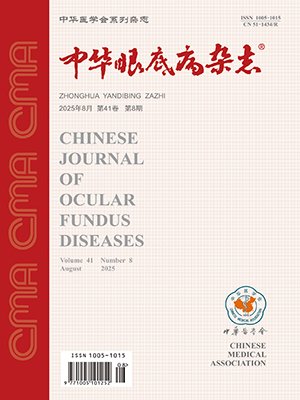Objective To evaluate the therapeutic effects of treatments of eye-retaining and enucleation for choroidal melanomas. Methods The clinical data of 44 patients (44 eyes) with choroidal melanomas after eye-retaining treatments and enucleation surgery were retrospectively analyzed. The metastasis, retention rate of eyeball after eye-retaining treatment, and visual acuity prognosis were observed and analyzed. In 44 eyes treated by eye-retaining therapy, transpupillary thermotherapy (TTT) was performed primaryly on 7 (15.9%), 106 Ru brachytherapy on 25 (56.8%), and local resection of tumor combined with 106 Ru brachytherapy on 12 (27.3%).The average follow-up period was 13.3 months. Results Forty-four patients had no melanoma metastasis during the follow-up period. In 39 patients (88.6%) who had their eyes retained successfully, the retention rate of eyeball was 100%, 92.9%, and 83.3% in 6, 14, and 24 eyes with small, middle, and large tumor, respectively. In the patients treated by eye-retaining therapy, the visual acuity was ge;0.3 in 11 (28.2%), ge;0.05-<0.3 in 18 (46.2%), and <0.05 (25.6%) in 10 eyes. Conclusions 106 Ru brachytherapy and transpupillary thermotherapy are effective treatments for small and medium-sized choroidal melanomas; some selected cases with large choroidal melanomas was treated with local resection of tumor combined with106 Rubrachytherapy. However, longer followup will be necessary to assess if this treatment has a better comprehensive outcome, compared with enucleation surgery. (Chin J Ocul Fundus Dis, 2006, 22: 150-153)
Citation: LIANG Jianhong,LI Xiaoxin,JIANG Yanrong. Therapeutic effects of eye-retaining treatment for choroidal melanoma. Chinese Journal of Ocular Fundus Diseases, 2006, 22(3): 150-153. doi: Copy
Copyright © the editorial department of Chinese Journal of Ocular Fundus Diseases of West China Medical Publisher. All rights reserved




